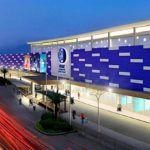
The remaking of Philippine cities
BY ARCHITECT FELINO A. PALAFOX, JR. ON DECEMBER 8, 2016
THE remnants of our past decisions will be lived until they are corrected. Until then, actions cascade to the point that a mistake becomes a foundation. With the current administration, I believe genuine change and reform can be done, most especially on the issues of inadequate and substandard infrastructure, and stricter implementation of architectural, planning and zoning guidelines.
One of the most memorable experiences that many Filipinos who go to visit places like Hong Kong, Seoul and Singapore is the ease of traveling within those cities. Even a first-time visitor can easily find his way around the city. Sidewalks are clean, wide, well-lighted at night, and are safe. No signs like “bawal umihi dito”, or “bawal magtapon ng basura”. No security guards requiring you to open your bags when riding the train or entering the mall, and most especially, walking is a pleasing activity.
From the standpoint of an architect and urban planner, these things are not revolutionary, they are the minimum. Mass transit, walking, biking, cleanliness, and safety are all basics. Metro Manila city planning and architecture need to go back to the basics.
Transportation and mobility
Philippine cities today are copying Metro Manila, even the obsolete and erroneous architectural and planning mistakes of the megalopolis. The reason that the transportation woes of Metro Manila are difficult to resolve is that Metro Manila continues to follow a 40-year-old mistake of car-centric planning, which was made famous in many American cities during the post-World War II period–cities such as Los Angeles, Hollywood and Beverly Hills.
In a country like the Philippines, only around 5 to 10 percent of the population can afford cars, so why allocate most of the road to this small percentage of the population? On the other hand, car sales are expanding faster than new roads are being built. Until when will this be sustainable? Car consumption has risen to 30 percent, but does the road capacity increase by 30 percent as well?
At EDSA, more than 70 percent of road space is used by private cars. Coupled with the issue of poor terminal design, open access, and an inefficient train system, EDSA will implode, most especially if the 300,000 new automobiles will increase even by a few hundred thousand. By 2020, EDSA may move at two kilometers per hour during rush hour.
Land use and zoning issues
The right to use property is not absolute; social good is a consideration and duty. If a proposed building would greatly increase the volume-capacity ratio of adjacent roads, there should be an assessment if such development should be allowed. Also, if allowed to proceed, commercial establishments should be required to submit and comply with traffic impact assessment, mitigation and design, and pay a “traffic-impact tax.”
In the case of Metro Manila, citizens who work in Makati and Quezon City live as far away as Bulacan, Cavite, Laguna and Rizal. They travel back and forth. The critical issue is that housing is not affordable in the places near where they work.
This phenomenon is not unique to Metro Manila. It was also a major issue for London, New York, Singapore, Seoul, and Hong Kong back in the 1970s. In a forum on city planning that I attended in Boston during the late 1990s, one of the points made wasthat having big houses in the heart of the central business district takes away opportunity for more families to live in the area. In the economics of supply and demand, as demand goes up but supply does not, the price goes up. This is why real estate values in the central business districts are very high. Having low-density residential development, or even low-density commercial development, greatly contributes to the scarcity of the housing stock. It pushes the real estate value to go up further, but at the expense of lack of supply.
In a gated subdivision in the heart of a central business district, a 300-500 sq. meter lot only accommodates one family with at least six members. But by building higher and making it into a mid-level rise, multi-family dwelling or condominium, a 300-500 sq. meter lot can accommodate at least five families. Apart from the impact of scarcity of housing stock, gated subdivisions do not allow access to traffic, strangulating the major thoroughfare of its innate alternative and service routes. EDSA is precisely experiencing the consequence of obsolete land use and zoning principles along its whole length. This principle was adopted throughout the entire Metro Manila, as well as other major cities in the Visayas and Mindanao. The result of adopting a low-rise horizontal development is the phenomenon we call “urban sprawl”— the uncontrolled expansion of urban areas.
Moving forward
More than the efforts of government, the business community and civil society have equal roles and duties to fulfill in solving the social ills of our community. I also believe that genuine change starts with ourselves. Even the smallest and simplest of actions can spark the remaking of our society.









